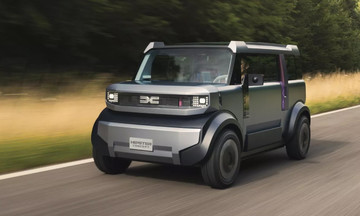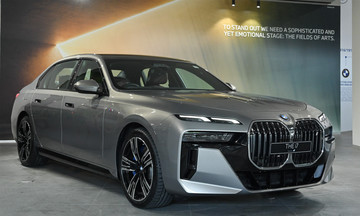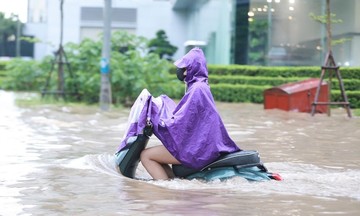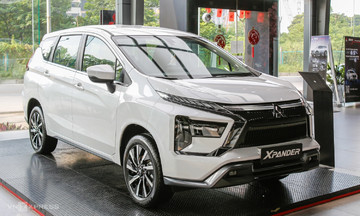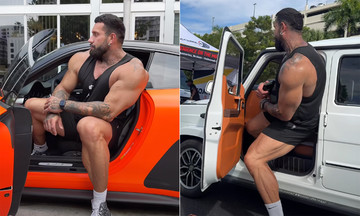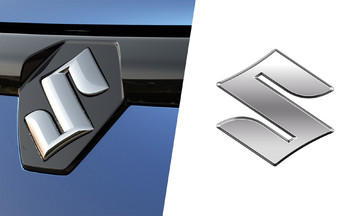The remnants of Typhoon Kajiki brought heavy rainfall to Hanoi and several provinces from central Vietnam northward between 25/8 and 27/8, causing widespread flooding. In these inundated areas, while most gasoline-powered motorcycles and cars opted to wait or seek alternative routes, numerous electric vehicles were seen driving through the water. These images led many to believe that electric vehicles can handle flooded areas with ease, possessing an advantage over gasoline vehicles due to their immunity to stalling and hydrolocking. However, experts warn that this is a misconception fraught with potential risks.
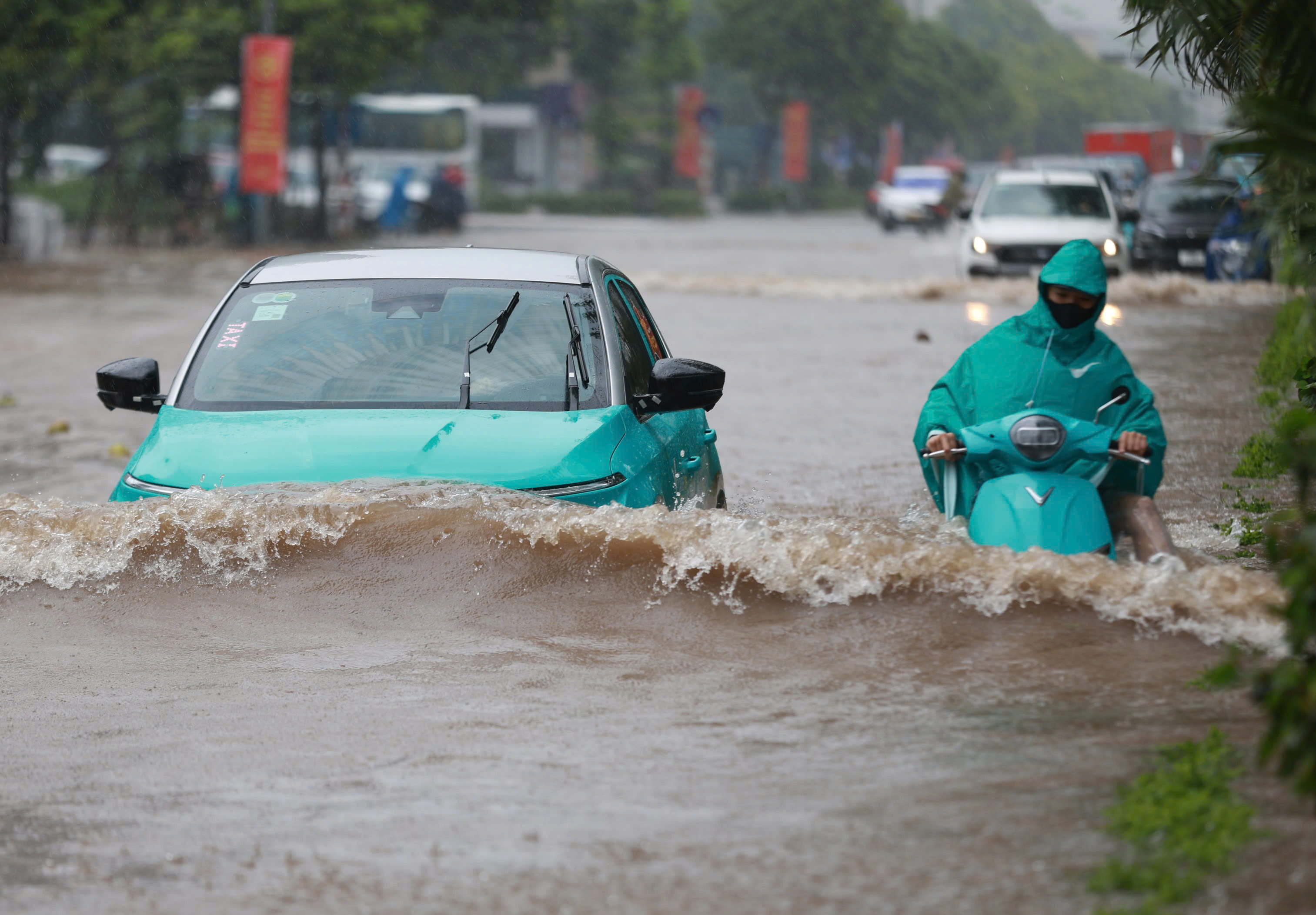 |
A warning against submerging the vehicle in water on the Honda CUV e: electric motorcycle model, despite its IP67-rated battery pack. Screenshot |
Electric motorcycles and cars navigating a flooded area in Hanoi, 26/8. Photo: Duc Dong
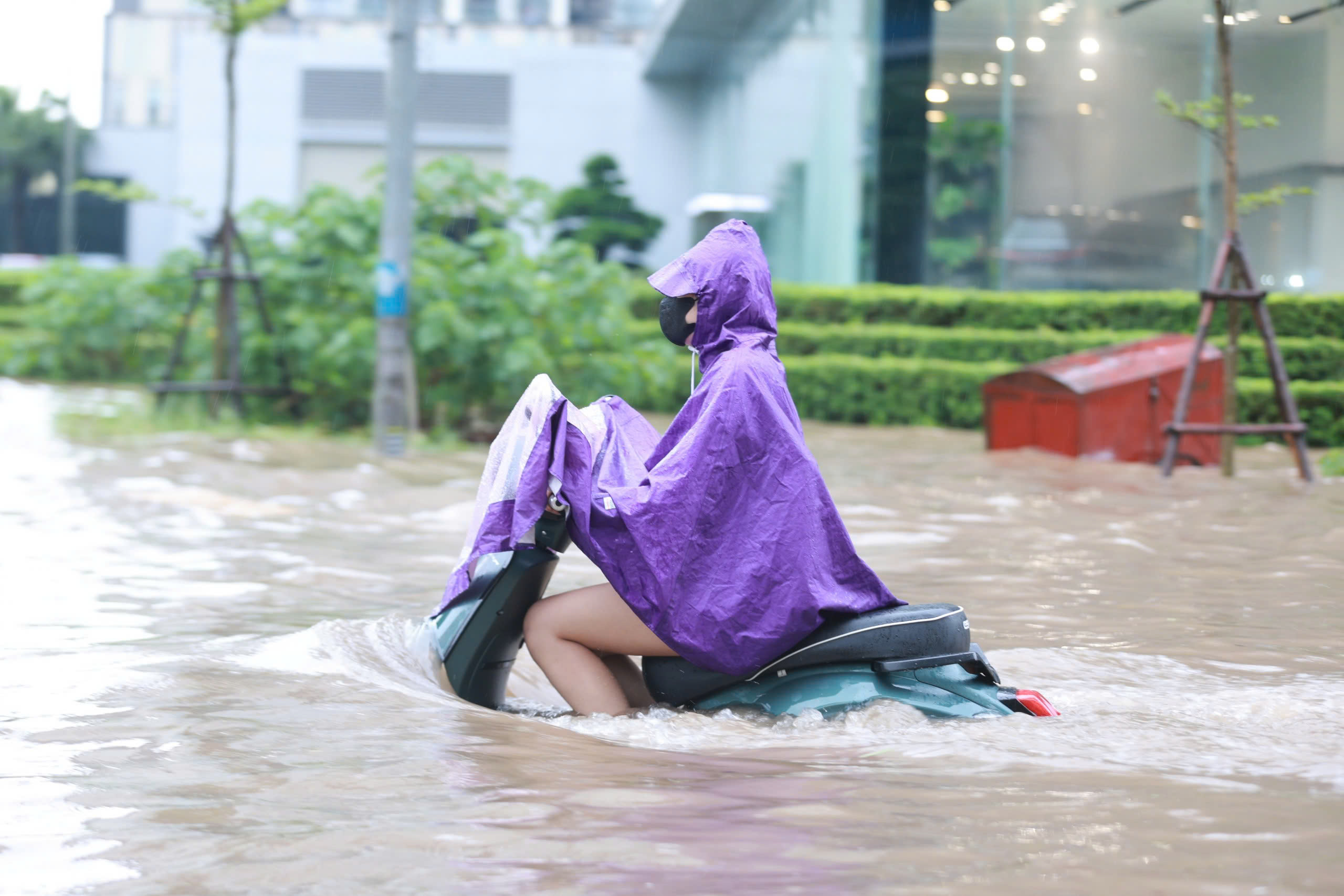 |
Electric motorcycles and cars navigating a flooded area in Hanoi, 26/8. Photo: Duc Dong
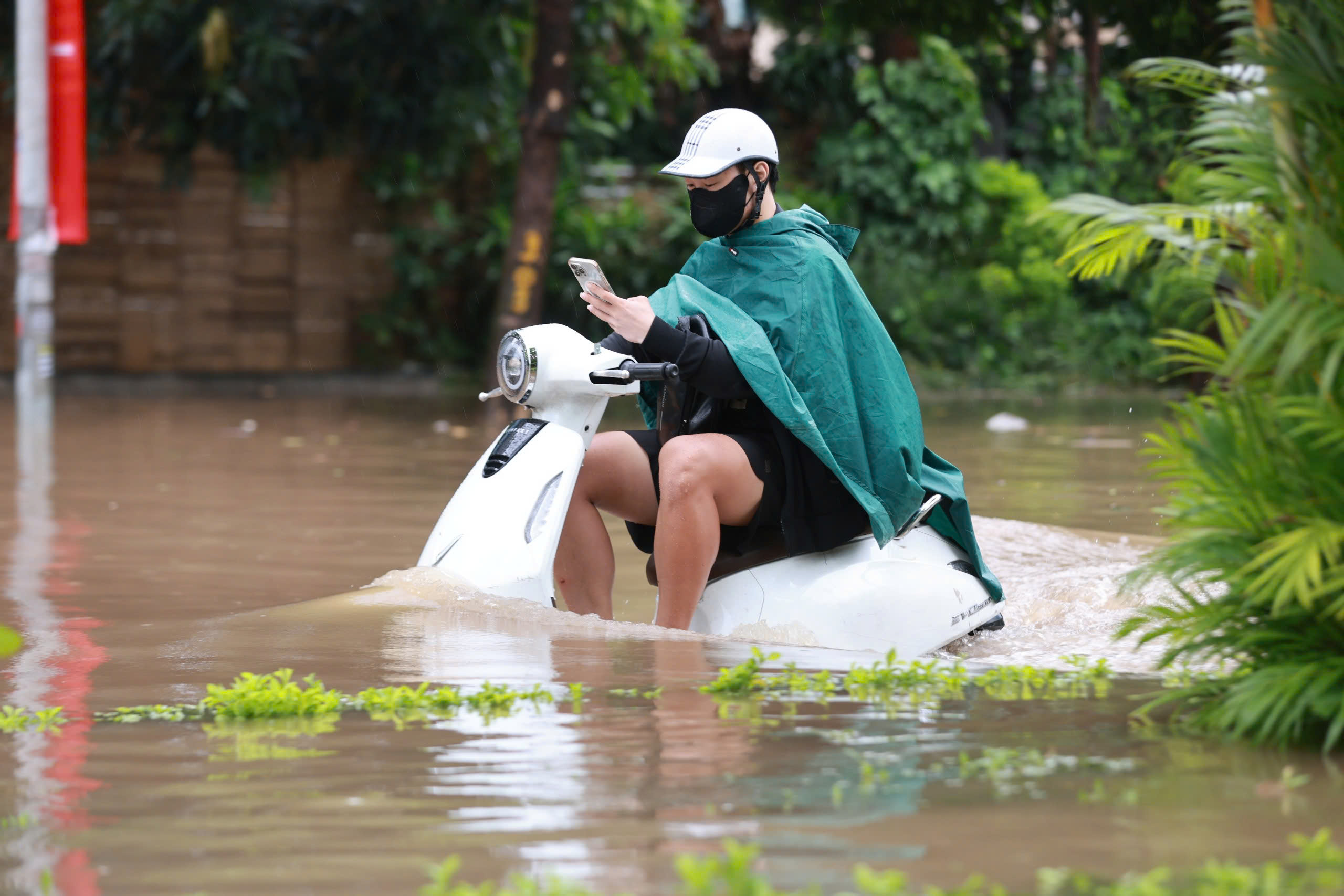 |
Electric motorcycles and cars navigating a flooded area in Hanoi, 26/8. Photo: Duc Dong
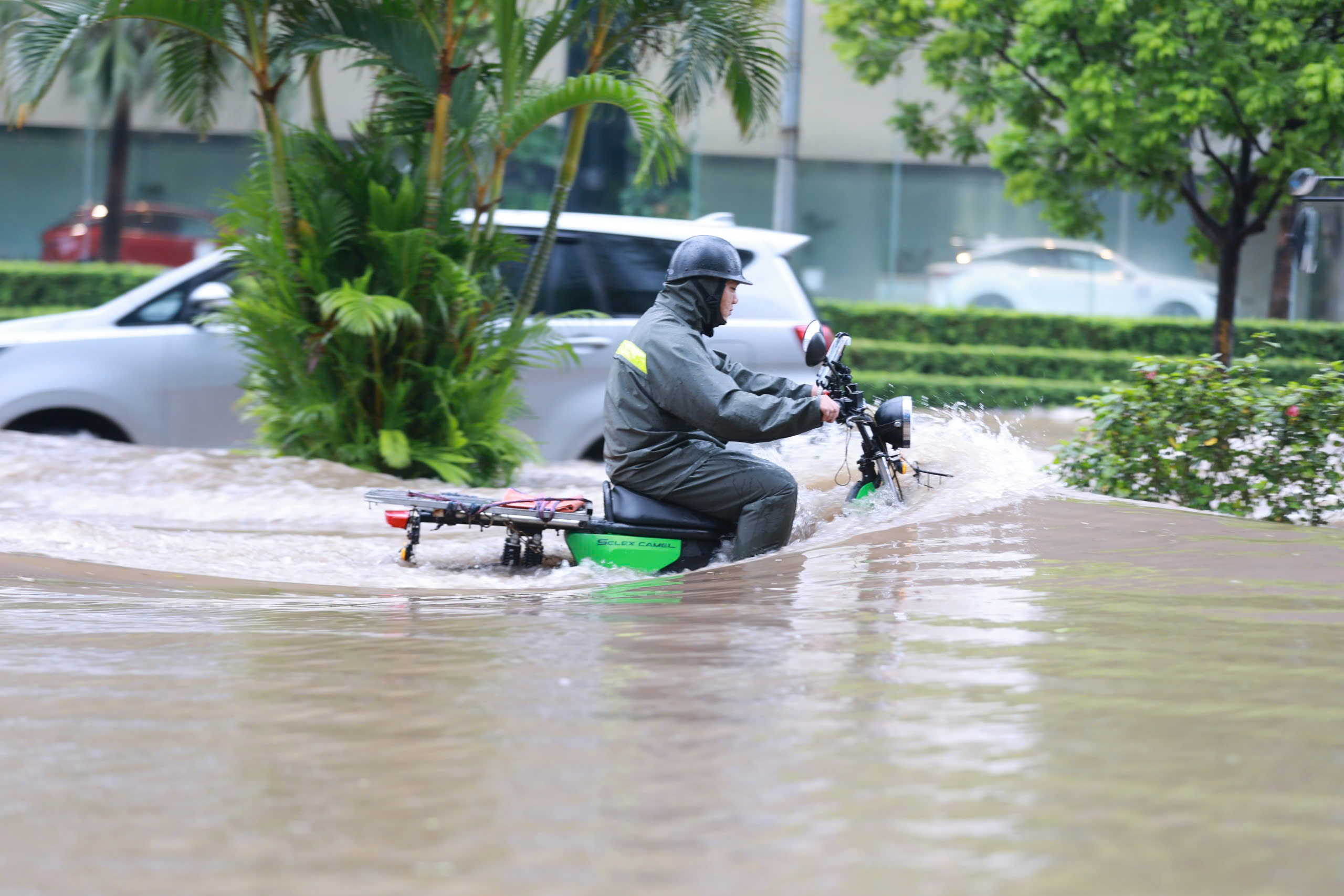 |
Electric motorcycles and cars navigating a flooded area in Hanoi, 26/8. Photo: Duc Dong
Most current electric motorcycles and cars are equipped with batteries and motors that meet IP67 or IP68 water resistance standards. This means the battery pack and control unit can withstand submersion in water for about 30 minutes at a depth of one meter (IP67) or longer and deeper (from 1.5 to 2 meters) depending on the manufacturer's configuration and claims.
Based on these specifications, the IP67 or IP68 water resistance standards often reassure users of the safety of electric vehicles in floods, as it's rare for roads to be flooded to a depth of one meter where vehicles can still operate, and equally rare for flooded sections to extend for a 30-minute drive. However, these water resistance standards are tested according to the International Electrotechnical Commission (IEC) standards in ideal laboratory settings. Specifically, the tested devices are submerged in clean, still water, free of mud, chemicals, or debris, and without the pressure of flowing water.
In Vietnam, some electric vehicle manufacturers have conducted similar tests using clean water tanks for testing purposes. Currently, there are no tests globally to demonstrate the ability of electric vehicles to withstand continuous flooding for several days in contaminated water.
In real-world conditions, when vehicles navigate flooded roads, the water often contains mud, debris, and even corrosive chemicals, and is constantly agitated by currents or waves created by other vehicles. These factors create significantly greater water pressure than in test environments, making it easier for water to penetrate critical components like the battery, motor, or control unit. Therefore, despite meeting IP67 or IP68 standards, electric vehicles cannot be considered invulnerable "submarines" when wading through water, especially in deep and prolonged flooding.
Furthermore, the water resistance of electric vehicles depends heavily on the quality and durability of seals, adhesives, and sealing materials. These components do not have an indefinite lifespan and will wear down and deteriorate over time due to temperature, humidity, dust, and frequency of use. When seals become hardened, cracked, or deformed, their ability to prevent water ingress decreases significantly, compromising the initial water resistance standard. This means that a new electric vehicle might meet IP67 or IP68 standards, but after a few years of operation, the level of flood protection may no longer match the manufacturer's initial claims.
Frequently driving through flooded areas not only poses risks to the battery and motor but also accelerates the deterioration of many mechanical components. Parts like bearings, after exposure to dirty water, are prone to having their lubricating grease washed away, leading to increased friction, noise, and reduced lifespan. The frame, swingarm, and other metal parts, if submerged in water for extended periods, are susceptible to oxidation and rust, weakening the structural integrity if this occurs frequently and for prolonged durations. These are subtle damages, difficult to detect immediately, but can lead to increased maintenance and repair costs over time and accelerate vehicle deterioration. This applies to both gasoline and electric vehicles.
In Vietnam, there have been numerous cases of electric motorcycle and car users paying a heavy price for repeatedly driving their vehicles through deep water for extended periods. The consequence has been the need to replace the battery and electrical system. For cars, the cost of each battery pack is around several hundred million dong, while for motorcycles, it reaches tens of millions of dong.
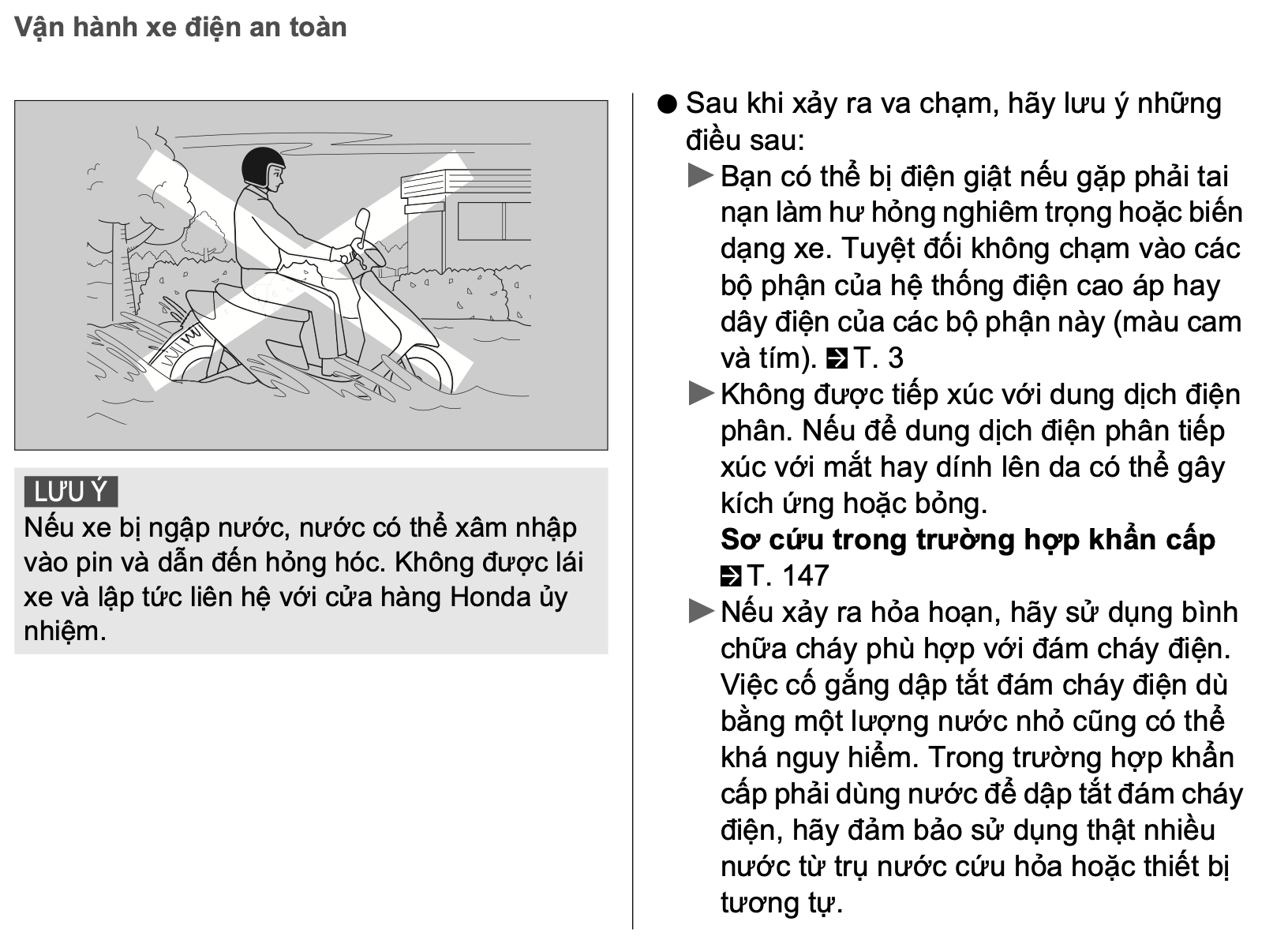 |
Electric vehicle manufacturers and experts advise users to consider the vehicle's water resistance standard as a safety measure, mitigating risks in certain situations, rather than a vehicle feature. Overreliance on this standard can lead to serious damage, high repair costs, and even safety risks if electrical components are affected.
Ho Tan




